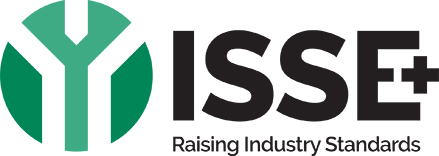21 years ago on 24th October 2002, the Control of Lead at Work Regulations (CLAW) were ‘made’, which means they had been completed and were ready to be laid before Parliament, 31st October, 2002. They came into force 21st November, 2002. So what? You may ask.
This week, 22nd – 29th October, is International Lead Poisoning Prevention Week (ILPPW). WHO knew!? As part of global and national efforts to raise awareness and understanding of lead hazards and its exposure risks, especially in and around construction activities and the built environment, the Institute of Specialist Surveyors and Engineers (ISSE) will be hosting a 4-part programme, to be held weekly from 31st October. This will feature ISSE’s Technical Director, Tristan Olivier, the recognised topic specialist who attended the inaugural conference of UNEP’s Global Alliance to Eliminate Lead in Paint (GAELP), back in 2010, now known as the Lead Paint Alliance.
If you have responsibility or concerns around safeguarding, learning /training and LiFEtime performance in the workplace, in schools and even at home, this programme is a must-see. The inconsistencies, misinformation and falsehoods surrounding the effective management of lead exposure risks have to be heard (and seen) to be believed. This work forms part of the much bigger ISSE project to launch a new DustSAFE Standard as part of its new holistic qualification consistent with the delivery of Gold Standard competence and ethical performance requirements of the Hackitt Report and Building Safety Act, 2022.
Lead became the world’s most widespread neuro-toxin as a result of its global use in leaded petrol. Algeria was the last country in the world to ban this use in 2021. Lead contamination is everywhere: in our soils, food and water supplies and is re-entrained into the air we breathe. And it does not biodegrade. It was added to paint (no longer in the UK), but such paint cannot be considered ‘lead-free’. And, somewhat disconcertingly, most of us have some lead in our bodies and our brains. Yet, it seems, lead exposure risks could not be further from our consciousness and conscientiousness when it comes to risk assessments for construction and refurbishment, never mind home improvements and DIY.
Since December, 2014, HSE has warned duty holders to “err on the side of caution when cutting, stripping or grinding painted material and assume it contains lead unless there is good evidence to prove otherwise”. Lead in paint is not the exception. It is the everyday. Even paint made with ‘no added lead’ tends to contain it because of other ingredients used in its manufacture have been tainted by it in the environment. There is no ‘safe’ level of lead exposure.
2021 is an important date not simply because of the Algeria leaded petrol ban but, more importantly, because of the reduction by the UK Health Security Agency, of the acceptable threshold levels for lead in the blood of children under 16yrs and pregnant mothers. This tougher, more protective, standard has not yet carried through into a downward revision by the HSE of acceptable occupational lead exposure levels – which needs to be put into effect without further delay. Time is of the essence.
Given the recent headlines around the Reinforced Autoclaved Aerated Concrete (RAAC) issue, it is sobering to think that, regardless of structural weaknesses being found, significant lead exposure risks can be created by the surveys and installation of temporary supports, not to mention during any subsequent remediation. Truth be told, most of the affected environments, and most others, already had pre-existing lead exposure risk potential – especially from the disturbance of ceiling dust in floor and ceiling voids.
For further details, please email ISSE and reference ‘Leading with Lead’: admin@isse.org.uk
